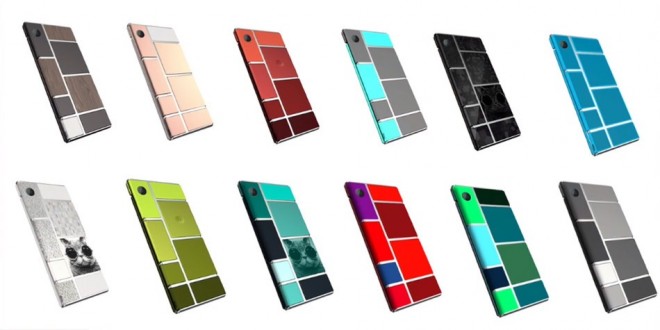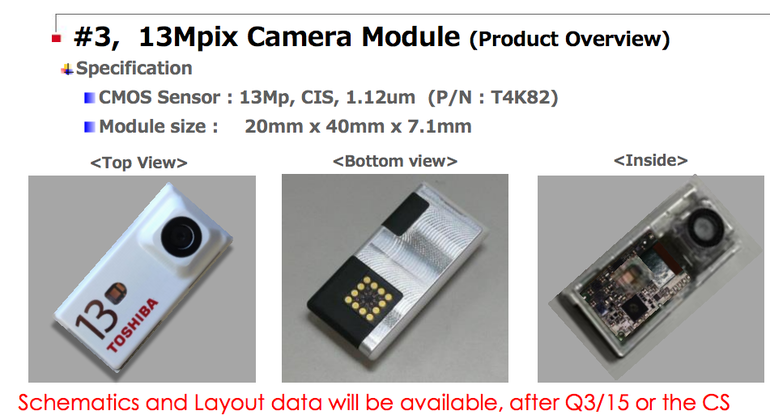Project Ara is one of the most interesting and ambitious projects Google is working on and progress within the project is fast. New module manufacturers are on board with Project Ara, and the modular phone is shaping up to be the smartphone of the future. For all we know, Project Ara could replace the Nexus, Android One and GPe projects altogether if Google manages to get enough hype and enough manufacturers creating Ara modules that would be affordable and various. The new Project Ara prototypes should be on show at the MWC, but take that with a grain of salt as Google is yet to confirm that.
Toshiba is one of the biggest backers of Project Ara and is supplying the modular smartphone with camera modules. Leaked images of the camera modules reveal that the sensor will be a 13 MP CMOS sensor with autofocus of a pretty small size, namely 20*40*7.1 mm. That module size suggests that Project Ara modular smartphones in the beginning will be quite thick and bulky, but that doesn’t mean Google and its partners won’t be improving on that aspect. At the same time, Toshiba is also working on a computational array camera made up of two 5 MP cameras. Besides manufacturing the camera modules, Toshiba also came forth with switch and bridge ASICs for the on-board network of Project Ara. Toshiba will release the schematics and layouts of their modules to other manufacturers in the future so that more modules can be made based on their model.
The new prototypes to be show off at the MWC are the third Project Ara base unit models which have received the code-name Spiral 3. According to ZDnet, Spiral 3 will be used in the upcoming market test to be held in Puerto Rico later this year. At the MWC in March, Google and Toshiba will most likely reveal other partners for the Project Ara project and will be unveiling 50 different modules that are already being tested. According to The Telegraph, module prices will be between $50 and $100, which is decent.
With that price, you could create a cheap Project Ara phone for around $300, which would include a processor, a camera, a display and a battery unit, as well as some sensors most likely. We are curious to see what other partners are on board with Project Ara and we’re anxious about the 50 modules that will be demoed at the Mobile World Congress next month.
 Load the Game Video Games, Reviews, Game News, Game Reviews & Game Video Trailers
Load the Game Video Games, Reviews, Game News, Game Reviews & Game Video Trailers



